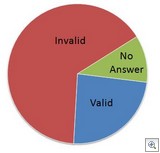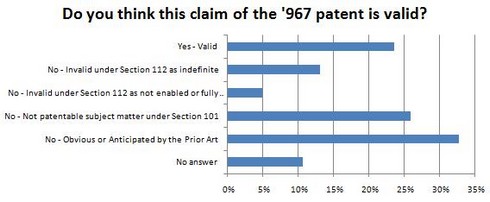Guest Post by Michael Risch, Associate Professor of Law, Villanova University School of Law
My forthcoming Florida Law Review article, America’s First Patents, examines every available patent issued during the first 50 years of patenting in the United States. A full draft is accessible at this SSRN page. The article reaches three conclusions:
- Our patentable subject matter jurisprudence with respect to methods can, in part, blame its current unclarity on early decisions by a few important judges to import British law into the new patent system.
- Early patenting trends suggest that Congress has never intended new subject areas be limited until Congress explicitly allowed the new subject area.
- The machine-or-transformation test, which allows a method patent only if the process involves a machine or transforms matter, has no basis in historic patenting practices.
When the Federal Circuit first issued its en banc opinion in In re Bilski, I believed that its machine or transformation rule could not have been based on history. I wrote in my 2010 article Forward to the Past that:
in its effort to deal with high technology, the [Federal Circuit] abandoned low technology. There are many patented processes that have nothing to do with machines or transformations—methods for measuring fabric, methods for harvesting fruit, and methods for manufacturing products by hand (for example, forming wrought iron). At worst, these types of historically patentable inventions would now be unpatentable. At best, determining what is patentable and what is excluded became much more difficult.
However, I did not have any real proof to support this statement, so I thought I would test the assertion with some quasi-empirical evidence. I spent the summers of 2010 and 2011 working with several research assistants, and we read every available patent we could find, a total of about 2500 before 1836 (most of our pre-1836 patents were destroyed in an 1836 Patent Office fire), and 1200 between 1836 and 1839. The goal was, first, to categorize patents as methods and, second, to determine whether each method used a machine or transformed matter to a new thing.
This was no easy task. Many early patents were difficult to read, and not just because they were handwritten. At the time, inventors did not have to claim their subject matter. As a result, patents usually described how to make or do something, and nothing more. It was often difficult to tell whether the making or the thing made was purportedly inventive. Even after more inventors started using claims, patentees would claim the exclusive right to “manufacture product X by doing Y,” which still left matters unclear.
This difficulty leads to my first conclusion. While courts often talked about “principles” in early judicial opinions, quite often they were attempting to determine the “principle of the machine” to identify what was patented for infringement purposes. Even when courts mentioned that principles were not patentable, the statement was usually a side issue and “principles” meant very basic principles, like “motion.” Because principles were not patentable, courts attempted to construe the patent in a way that was not a principle. This, it seems, is contrary to how we do things under recent cases.
In reading this old history, I discovered something interesting (and I don’t claim to be the first person to discover it – merely the first to tie the content of old patents to support the conclusion). Specifically, early judges imported British law into interpretation of the American statute. This might seem reasonable, except that methods were not patentable in England until after 1840. But methods were explicitly patentable (called “art” in the statute) in the U.S. Indeed, the very first patent covered a method of making pot and pearl ash. But Justice Story, who sat as a Circuit Justice in many patent cases, did not think methods should be patentable, and as such issued statements in many cases about what could not be patented – statements that have been repeated even until today. My article looks at these statements in detail, and shows how unclarity in early patents allowed the courts to perpetuate a (wrong) view that we must limit method patents in particular ways.
In the second part of the article, I discuss some general findings about the patents. Some were dangerous (lead paint and asbestos), some were ridiculous, and some were enduring. There were many business methods related to teaching , music, and exercise, and there was even a rudimentary software patent (on a Jacquard loom, though I know some think that this is not really software). This was an entertaining part of the article to write; it was interesting to see how industries developed through patents. However, there is one overriding theme: the patents started simple, grew more complex over time, and expanded to new subject matter over time. Further, very little of the subject matter that dominates today’s inventions—such as electronics, chemicals, and pharmaceuticals—was apparent in early patenting. My conclusion from this analysis is that the patent system was designed to handle new subject matter as it is invented, and that Congress never expected to step in and approve new subject matter over time.
The final part of the article examines the motivating issue: whether the machine or transformation test was historically used. Because patents from 1793-1836 were not examined by the Patent Office but those from 1836-1839 were, I could test whether inventors had a different view of this issue than patent examiners had. It turns out that the groups did not differ; the results are statistically the same before and after 1836.
And those results show that our first inventors did not limit methods to those that used machines or transformed matter. About 40% of the methods patents between 1790 and 1793 did not use a machine or transform matter. These would all be invalid under the modern test. To be sure, the test was very good at identifying business methods—nearly all of the business methods fell into that 40%, so it is hard to fault the test for failing to identify early business methods. Of course, today’s business methods do use machines, so I am not sure how accurate the test would be today.
However, there were many patents –many more than the business methods—that did not use a machine or transform matter. This, to me, suggests that among the tests other failings, it has no real basis in past practice or understanding. While we can debate the merits of the recent Prometheus opinion, I applaud its rejection (again) of the machine or transformation test as a way to determine patentable subject matter.
This post presents the basic conclusions of my article. There is obviously much more in this 50 page paper than I can write here. I detail my methodology (and its limits), 19th century law, and the patents in the full paper.

